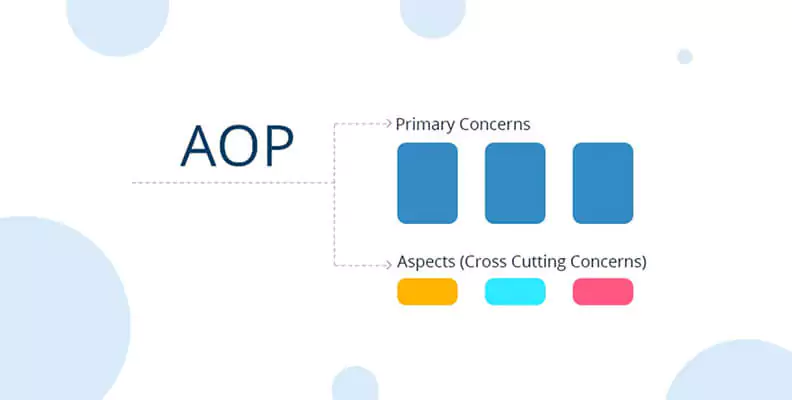Loading.....
Introduction to Spring Framework: Dependency Injection and AOP
The Spring Framework has revolutionized the world of Java enterprise application development, offering a comprehensive and powerful platform for building robust, scalable, and maintainable applications. At the heart of Spring lie two pivotal concepts: Dependency Injection and Aspect-Oriented Programming (AOP). In this introductory guide, we will explore these concepts and their importance in modern software development.

What is the Spring Framework?
The Spring Framework, often referred to simply as "Spring," is an open-source framework for building Java-based enterprise applications. Developed by Rod Johnson in the early 2000. It is a versatile and robust open-source framework designed to simplify the development of enterprise-level applications in the Java programming language. It provides a comprehensive infrastructure for building various software components, making it a go-to choice for Java developers.
Spring offers a wide range of modules and features that address different concerns in software development, such as dependency injection, aspect-oriented programming, data access, and more. These modules can be used individually or combined to create sophisticated, scalable, and maintainable applications.
One of the core features of the Spring Framework is dependency injection, which helps manage the relationships between components in a more flexible and manageable manner. This promotes the development of loosely coupled and easily testable code, enhancing the overall quality and maintainability of Java applications.
Aspect-Oriented Programming (AOP) in Spring

Aspect-Oriented Programming is a powerful paradigm that complements Object-Oriented Programming. AOP allows developers to modularize cross-cutting concerns, such as logging, security, and transaction management, which often spread throughout an application. Spring AOP provides a straightforward way to apply AOP concepts in your projects.
Key Concepts in Spring AOP:
- Aspect: An aspect is a module that encapsulates cross-cutting concerns. Aspects define where and how the behavior is to be applied.
- Advice: Advice is the action taken by an aspect at a particular join point. Common types of advice include "before," "after," and "around" advice.
- Join Point: A join point is a point in the execution of the application where an aspect's advice can be applied. These points could be method invocations, field access, or even object instantiation.
- Pointcut: A pointcut defines a set of join points, specifying where advice should be applied. It uses expressions to match specific join points.
- Weaving: Weaving is the process of integrating aspects into the application's code at the defined join points. Spring AOP supports both compile-time and runtime weaving.
Benefits of Spring AOP:
- Modularity: AOP allows you to separate cross-cutting concerns from your application's core logic, enhancing modularity and code maintainability.
- Reusability: AOP modules can be reused across different parts of your application or even in multiple projects.
- Centralized Management: AOP aspects can be configured centrally, making it easier to change behavior across the application.
Dependency Injection (DI) in Spring
Dependency Injection is a design pattern and fundamental concept in Spring. It simplifies the process of managing dependencies within your application, making it more maintainable, testable, and loosely coupled. In a nutshell, DI involves injecting objects that a class depends on (its dependencies) rather than allowing the class to create them itself.
Key Benefits of Dependency Injection:

- Decoupling: DI reduces the coupling between classes, making it easier to replace, extend, or modify components without affecting the rest of the system.
- Testability: By injecting dependencies, you can easily substitute real objects with mock objects during testing, enabling comprehensive and efficient unit testing.
- Configurability: Spring's DI container allows you to configure dependencies in a central location, facilitating changes without modifying the code.
- Reusability: Components with injected dependencies can be reused in various parts of your application.
How Spring Implements Dependency Injection
Spring provides a comprehensive Inversion of Control (IoC) container that manages the creation and assembly of application components. Developers define the structure of their application using XML configuration, Java annotations, or Java code. Spring then takes care of instantiating and injecting dependencies.
Once the developer outlines the relationships and dependencies between different components in their application, Spring's IoC container comes into play. It takes on the responsibility of orchestrating these components, ensuring they are created and wired together appropriately.
Through this process, Spring manages the lifecycle of these components, handling their instantiation and the injection of their required dependencies. This not only simplifies the development process but also enhances the maintainability and scalability of the application.
Conclusion
In summary, the Spring Framework's Dependency Injection and Aspect-Oriented Programming capabilities greatly enhance the development of Java enterprise applications. Dependency Injection simplifies the management of dependencies and encourages best practices, while Aspect-Oriented Programming enables the modularization of cross-cutting concerns. Together, these concepts contribute to more maintainable, testable, and scalable software systems, making Spring a cornerstone of modern Java development.
 Back to blog
Back to blog












